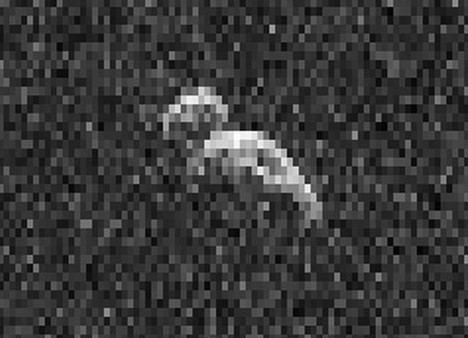Discovery date 11 December 2014 Discovered 11 December 2014 | MPC designation 2014 XL7 Observation arc 475 days (1.30 yr) Absolute magnitude 21 | |
 | ||
Discovered by Mt. Lemmon Survey (G96) Aphelion 2.5362 AU (379.41 Gm) (Q) Similar GU Piscium b, Kepler‑421b, Kepler‑296e, 2014 OL339, 2014 DX110 | ||
2014 XL7 (also written 2014 XL7) was the most dangerous potentially hazardous asteroid discovered in 2014 that remained on the Sentry Risk Table at the end of 2014. The Apollo near-Earth asteroid is estimated to be roughly 230 meters in diameter and had a cumulative 1 in 83000 chance of impacting Earth on 4–5 June between the years 2048 and 2084. It was removed from the Sentry Risk Table on 15 January 2015 using JPL solution 9 with an observation arc of 35 days.
On 1 September 2014 the asteroid passed about 0.259 AU (38,700,000 km; 24,100,000 mi) from Earth, but at that time the asteroid had an apparent magnitude of 25 and was roughly 25 degrees from the Sun. It was discovered on 11 December 2014 by the Mount Lemmon Survey at an apparent magnitude of 20 using a 1.5-meter (59 in) reflecting telescope. The asteroid has an observation arc of 35 days with an uncertainty parameter of 6. The asteroid was last observed on 15 January 2015, and is still being actively observed to better constrain the orbit. The asteroid will not drop below magnitude 25 until March 2015.
With an absolute magnitude of 21, the asteroid is about 170–380 meters in diameter.
With an observation arc of 19 days, it had a cumulative Palermo Scale rating of –2.85 and was briefly the 9th most dangerous asteroid known. It was calculated that on 4 June 2065 there was a 1 in 270000 chance of impact and on 4 June 2076 there was a 1 in 137000 chance of impact. On 15 January 2015 the asteroid was recovered by Cerro Paranal Observatory which extended the observation arc to 35 days, and 2014 XL7 was removed from the Sentry Risk Table.
